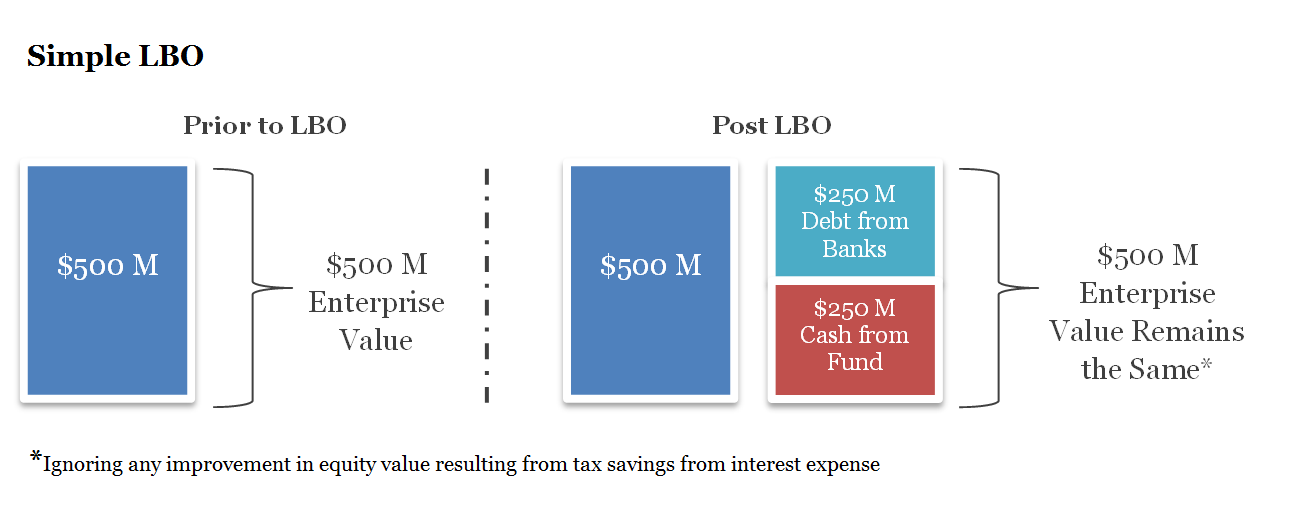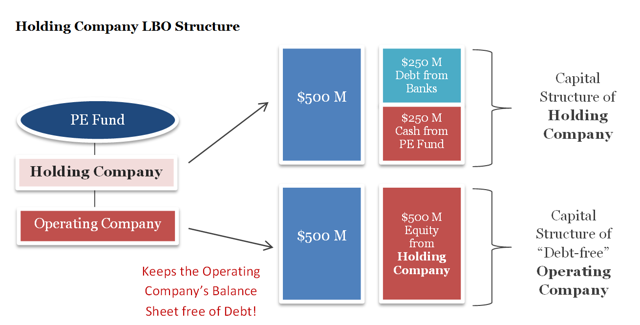Mirror Private Equity and Venture Capital strategies to help improve investment return potential using a margin trading account.
-
LBO structure used by private equity firms provides an interesting framework for margin investing.
-
How retail investors can apply this Private Equity trade secret with a margin account.
-
GOOGL example of buying on margin and how it can boost returns.
Private equity firms often buy companies outright and then use debt to improve returns on their investment by adding debt at a 'Holding Company' level that's separate from the operations of the business. In this post I'll describe how to apply a similar principal using a brokerage account to increase returns on companies that have the potential to support more debt on their balance sheets. I'll then illustrate why Alphabet Inc (GOOGL), previously Google, is a viable candidate for margin investing using this framework.
Plain Vanilla Private Equity Leveraged Buy-out (LBO)
In a typical LBO, a private equity firm will acquire a $500 million company by investing $250 million of their fund's cash and $250 million of debt sourced from banks and other lenders.

Let's assume that over the five years after the LBO, the company grows and manages to pay off all of its $250 million in debt owed to banks. With the debt paid off, the PE Fund sells the company for $1 billion. Since the company has already paid of its debt, the PE fund keeps the full $1 billion of proceeds from the sale realizing a cash on cash return of 4.0x [ $1,000 M / $250 M ] and a 5-year Internal Rate of Return (IRR) of approximately 32% / year [ 4.0^(1/5) ]. If they had acquired the company using only their own cash, their cash on cash return would've only been 2.0x [ $1,000 M / $500 M ] representing a 5-year IRR of approximately 15% / year [ 2.0^(1/5) ]. Simple enough right?
Holding Company LBO Structure
Since increased debt may distress the operations of a Company and its management team, private equity firms often choose to put the debt at the Holding Company level, securing the debt with the value of the Company.

Applying this LBO framework in a Brokerage Account
When buying stocks on margin, one can effectively act like the Holding Company in the "Holding Company LBO Structure" above. Let's walk through the logic using Alphabet Inc as an example, since the search engine has a quality history of generating strong free cash flow.
Private equity professionals prefer companies with a record of stable free cash flows and strong growth. By taking a quick look at the chart below, one can see that Alphabet Inc exhibits these characteristics.Since the debt would be added at the theoretical 'Holding Company' level (personal brokerage account), it's important to consider total leverage inclusive of the synthetic leverage created by margin borrowings. As of December 21, 2015, Alphabet Inc had a Debt to Total Capital ratio of 0.9%. The Company clearly has the capability to take on additional leverage (something Apple has recently done).
This simplified interactive google sheets model illustrates Alphabet's return potential with and without margin. The model makes the following key assumptions:
-
A total investment of $3,000 is made by buying 50% of shares on margin.
-
GOOGL's future financial performance is projected using consensus Wall Street Estimates.
-
Market conditions and growth opportunities remain similar in 5 years so that it can command the same Exit Multiple (a very common assumption in LBO models).
By using leverage in the manner defined, one can improve returns (IRR'S) by about 7%!
Why It's Important to Think about Margin Investing in This Way:
While buying stocks on margin is not a new concept, using this framework provides the necessary context to understanding your investment return potential. Thinking about margin in the context of debt held by a Holding Company, dissuades one from using margin to buy stocks that are already overly burdened with debt. If a Private Equity fund wouldn't be able to finance a transaction or dividend recapitalization, you probably shouldn't either. More importantly, it helps improve returns for companies where management has opted to use too little or negative leverage (Excess Cash > Debt) even if the company has predictable cash flows. By re-calibrating a company's capital to a more optimal financial leverage level using a brokerage account, you can spot investment opportunities and improve returns. Why let Private Equity professionals have all the fun?
Beware! This investment strategy isn't for the faint of heart or novice investor. Make sure you have the necessary trading experience and capital when utilizing this strategy!




